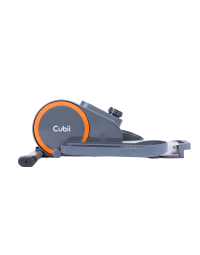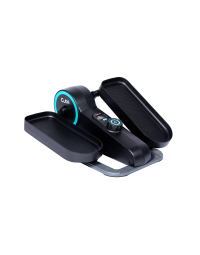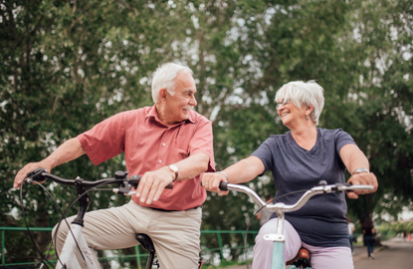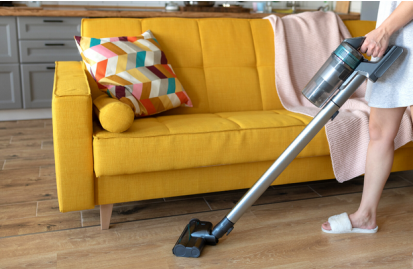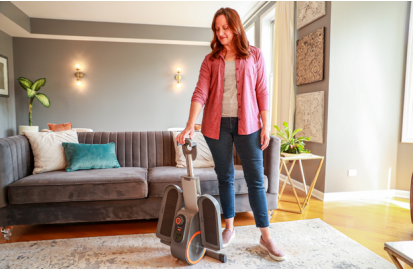Exercises for Seniors with Arthritis
For seniors who suffer from arthritis, exercise may feel like the last thing you want to do. But the truth is that exercise can help relieve arthritis pain, strengthen muscles and bones, increase energy, help control weight, and improve your overall health. If you have arthritis, different types of exercise can help ease your pain and stiffness.
Including some cardio, strength, and range of motion exercises in your routine will help you combat arthritis, feel better, and enjoy the most health rewards. Cardio improves heart health, strength training helps prevent bone and muscle loss that happens with age and protects your joints, and range of motion exercises will boost your body’s ability to move smoothly and efficiently. A well-rounded fitness program can help boost your mood and improve your quality of life.
Before beginning an exercise program, consult with your doctor for personalized recommendations and considerations.
Cardio
Cardiovascular - often called aerobic - exercise gets your heart rate up and uses your aerobic metabolism for energy, relying on a process using oxygen, your heart, and lungs to fuel you. Aerobic exercises help burn calories and maintain a healthy weight as well as improve your heart and lung health, reducing your risk of heart diseases and related disorders. Cardio workouts also strengthen your muscles and can improve your sleep.
These cardio exercises for seniors with arthritis are low-impact, meaning they won’t cause a lot of stress and impact to your joints. You can try different exercises until you find the ones you enjoy most for your cardio workouts. Seniors should aim to get in 150 minutes of moderate-intensity aerobic exercise per week, according to the CDC. This can be 30-minute workouts five times a week or if you need to do shorter workouts, you can do more frequent shorter cardio sessions.
Walking
Walking is an excellent cardio workout that places minimal stress on your joints. You can ease into a walking program by starting with short walks and gradually building up your walk distance. Aim to work up a sweat so maintain a steady, brisk pace for your walks.
Swimming
Swimming is another great aerobic exercise for seniors with arthritis because it’s easy on the joints while offering a vigorous workout. As with walking, you can build up your swimming workout time gradually. If you are a beginner, try swimming laps with a kickboard to get started.
Water Workouts
Cardio workouts in the water such as water walking or water aerobics offer low-impact ways to get in your workouts. The water takes pressure off your joints and warm water has the extra benefit of soothing sore muscles and joints.
Elliptical
An elliptical machine offers a low-impact aerobic workout for seniors with arthritis. Elliptical exercise places less stress on the joints than high-impact activities like running. You can try a Cubii seated elliptical for a convenient, low-impact workout from home.
Bicycling
Another option for low-impact aerobic exercise is cycling. Whether you bicycle outside or use a stationary bike, cycling offers an efficient workout that strengthens your heart and lungs, burns calories, and does not place a lot of stress on your joints.
Strength Training
Strength training is an important part of fitness that will help strengthen your muscles, which helps protect and support your joints. Improving your muscle strength also will help reduce your risk of falls, balance problems, and injuries. For seniors, you have different strength training options and can pick the one that works best for you.
Older adults should aim to get in one to three strength training sessions per week for your workout program. Give yourself at least one day of rest between strength training sessions so you don’t do two days of strength training in a row.
Resistance Bands
Resistance band workouts involve using bands to do strengthening exercises. You may do exercises like leg lifts, bicep curls, or squats with resistance bands for strength training workouts. There are different types and levels of resistance bands so you can start with beginning-level bands with a low level of resistance for your workouts.
Light Weightlifting
Weightlifting is a form of strength training that can help you build lean muscle mass. For weightlifting exercises, use machines at the gym, dumbbells, or everyday objects at home like soup cans. Do exercises that target your major muscle groups like squats and bench pressing. You can also do bicep curls and shoulder press-ups with dumbbells, soup cans, or weight machines.
Range of Motion Exercises
Range of motion exercises help improve your ability to move your joints in different ways. As people age, they often lose some range of motion due to injuries, soreness, and loss of muscle. Doing some range of motion exercises can help you stay limber, reduce joint pain, and boost your mood. These exercises can also improve your posture and balance and prevent falls.
You can do range of motion exercises every day or a minimum of three times per week. Here are some to try:
Stretching
Simple stretching exercises can help ease muscle and joint tension and improve how you feel. Some stretching exercises for seniors with arthritis include:
- Hand stretches can help reduce pain in your fingers and hands. Spread your fingers as wide as possible and then squeeze them into a fist. Repeat 10 times. This exercise is especially helpful for people with arthritis in the hands.
- Hamstring stretch targets the back of your upper leg muscles. To do a hamstring stretch, lie on your back with your right knee bent and your right foot on the ground. Bend your left leg and place your hands behind your left thigh, lifting your leg into the air and straightening it as much as you can. Hold for about 20 seconds and then release. Repeat to do 3 sets on each leg.
- Knee stretch helps ease tension in the knee area. Sit in a chair that is high enough to have your feet off the ground. Straighten one leg, keeping your thighs on the seat. Flex the foot of your raised leg. Hold for a few seconds. Repeat to do 10 on each leg.
- Shoulder stretch. Lie on your back with your arms straight by your sides. Raise one arm slowly up and over your head, keeping your elbow straight but not locked. Aim to place your raised arm close to your ear. Bring your arm back down to your side. Do 10 exercises on each side.
- Arm circles are a dynamic stretch that also strengthens your arms, shoulders, and core muscles. Try doing 30 seconds of small front arm circles, and 30 seconds of small back arm circles, and then repeat with large arm circles in both directions. Do two sets of each arm circle exercise.
You should feel a slight pulling sensation when you stretch but not pain. If you experience any pain, stop the stretch and consult with your doctor.
Yoga and Tai Chi
Yoga and tai chi offer stretching and balance exercises that can ease muscle and joint tightness and improve your balance and flexibility. Try a beginner’s yoga or tai chi class to learn the basics.
Tips for Seniors Exercising with Arthritis
Exercise is one of the best ways to reduce arthritis pain while improving your health. Although it may be tempting to become less active when you have arthritis pain, many exercises can help relieve pressure and strengthen your muscles, which helps protect your joints. Here are some tips to help you ease into a gentle exercise program for arthritis:
- Talk with your doctor before beginning an exercise program. You can discuss the best movements for you and any modifications you may need.
- Try modifications of different exercises or shorten the length of your workouts if you feel too much discomfort when performing a movement.
- Start slowly. Instead of jumping into an hour-long workout, try 10- or 15-minute movement sessions to get started. You can gradually add more time to your workouts over the course of a few months.
- Take a warm shower after your workouts to help ease any muscle or joint tension.
- If you experience sharp pain or increased pain during a workout, stop and consult your doctor.
- Make your workouts social by exercising with a friend or partner. This will help you stay accountable and motivated while enjoying the workout more.
- Try habit bundling and doing something you love while you exercise. If you’re using a home elliptical machine, for instance, you can also watch your favorite show or read a good book while getting in your workout.
- Track your progress. Use a fitness tracker or write down your workouts so you can see your milestones and stay motivated.
If you need a convenient way to do cardio workouts at home, check out our under-desk ellipticals for accessible, easy-to-use machines that offer an excellent low-impact workout. You can easily use and move your small elliptical machine, track your progress, and enjoy cardio workouts from the convenience of home. With accessories like lumbar cushions for extra spinal support, you can make your workouts as comfortable as possible. Check out our ellipticals and accessories to get started with a healthy home fitness program to help ease your arthritis symptoms.



